Cats can pull their hair out for a wide variety of reasons and they can range from actual medical conditions such as diabetes and psychogenic alopecia to parasites or allergies.
While grooming is normal in cats and should happen daily, if your cat starts pulling out their fur, you should get veterinary assistance.
If you are concerned about your cat pulling out their own fur we recommend you speak with a vet ASAP.
JustAnswer allows you to talk in real-time to veterinary experts for a small fee.
Contents
Reasons Your Cat May Pull Their Hair Out:
1. Stress Related Alopecia
This condition also goes by the name of psychogenic alopecia and it is a form of compulsive behaviour.
It is something that cats can experience when a new and more importantly, stressful event happens in their life.
This can range from a baby being born to a new cat being brought into the environment (without a waiting period).
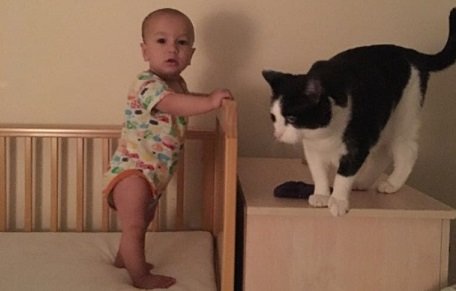
Cats that are anxious and do not like being taken to the veterinary clinic but might have to experience this because they are undergoing some type of treatment can also develop it.
Stress-related alopecia can sometimes be a combination of factors.
While your cat might indeed feel stressed, they might also have an underlying health condition, such as external parasites or a food allergy.
Psychogenic alopecia can be challenging to treat and may involve the use of calming products and therapy for any underlying health problem.
2. Cognitive Dysfunction
Some cats might be prone to developing a form of dementia in their senior years which can lead to unusual behaviours such as yowling, pulling out fur and more.
As a result of that, they could begin to behave differently – they might spend more time in darker and quieter places, avoid human contact, and get stressed quickly.
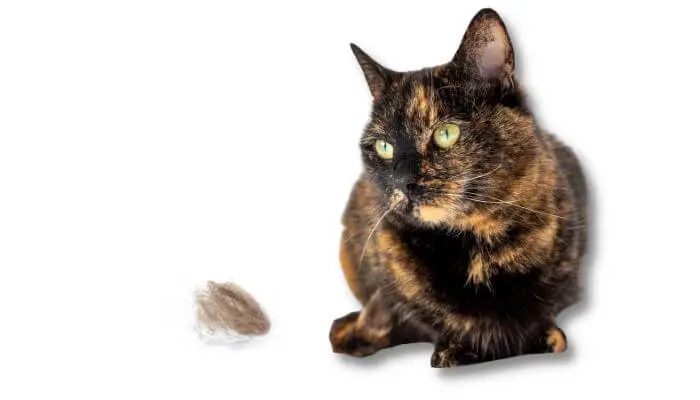
Therefore, they can start pulling their hair out because it might be a soothing mechanism or because they don’t remember how to groom their bodies properly.
There’s practically no way to treat cognitive dysfunction in a geriatric animal. Only their living circumstances can be improved.
3. Feline Diabetes
Even though consistent hair-pulling might not be the main symptom of cat diabetes, it can be something that can show up with time.

Cats that are suffering from feline diabetes will drink more water, be more lethargic, sometimes eat a lot of food, and yet still lose weight.
Because their bodies are not getting the nutrients they need, their coat might be severely affected, which is why when they tend to their grooming, they might pull out some of their fur.
Diabetes is usually manageable with insulin and other blood sugar-regulating medications.
4. Arthritis
As cats age, they begin to develop osteoarthritis in their joints much like people do.
Along with this condition comes mild discomfort, at first, but as the degeneration of the joints progresses, the cat will start being in significant pain.

Some cats may try to soothe themselves by pulling out the hair in the most affected areas.
While arthritis is effectively incurable, your vet can recommend some pain relievers and safe anti-inflammatory medications that can decrease your cat’s pain levels.
5. Cancer
Unfortunately, cats now can develop cancer for a wide range of reasons, from being constantly exposed to harsh chemicals to being predisposed to it genetically.
The condition we are discussing is called feline paraneoplastic alopecia and it is the clinical expression of tumours inside the animal’s body.

While it is not breed-specific, this health complication tends to affect cats that are older than 12 (roughly 64 years old in human years).
An in-depth diagnosis of cancer can lead to your cat receiving the appropriate treatment, which can range from chemical therapy to surgery and even radiation therapy.
6. Parasites
External parasites can often lead to the cat feeling so itchy that they might effectively pull out their hair in an attempt to calm themselves down.

This symptom can appear in all types of infestations, whether they involve fleas, mites, or lice.
Giving your cat medication against such parasites can partially solve the problem.
However, if the damage to the coat and skin has become more severe, the lesions will also be treated topically with ointments or creams.
Your vet can recommend the right type of product depending on your cat’s health or age.
7. Allergies
Like other animals, cats can become allergic to a variety of factors, whether that be the cleaning agents you use in your home, dust, or pollen, or even their food.
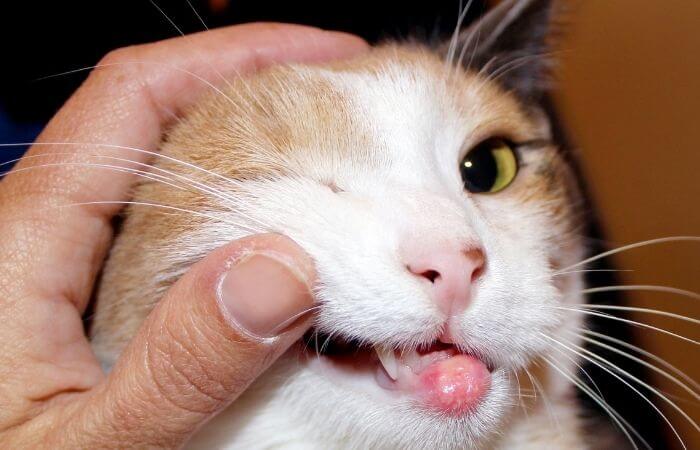
All of these allergies can lead to itchiness but one of the worst, believe it or not, is the one caused by food.
If your cat is truly allergic to one or more ingredients in their kibble or canned food, they will itch all over, so they will groom their body time and again.
Allergic tests can be performed for diagnosing the underlying cause and you may then change your cat’s diet.
8. Poor Nutrition
If your cat is not getting the right food and they might have developed a vitamin or mineral deficiency, they might inadvertently try to compensate for that by pulling their hair out and even eating it.

This is called pica and while it can be caused by stressful environmental facts, it can also be caused by poor nutrition, it can also result in your cat eating strange things including plastic and even poop.
To combat this make sure that you choose a high-quality diet for your cat, one that ideally contains as few additives and artificial colours as possible.
9. Dermatitis
Dermatitis is a somewhat generic name for most conditions that lead to the damage of a cat’s skin layers. It can happen because of parasites, ringworm, bacterial infections, or allergies.
Cats that are anxious might pull their hair out and then get dermatitis because of that or it could be the other way around.
This condition can sometimes be quite challenging to treat as the specific cause needs to be determined in order for the treatment to work.
10. Local Pain
If your cat has sustained any kind of injury or there’s local pain in a specific area coming from the inside of their body, they will try to soothe it by grooming it excessively.
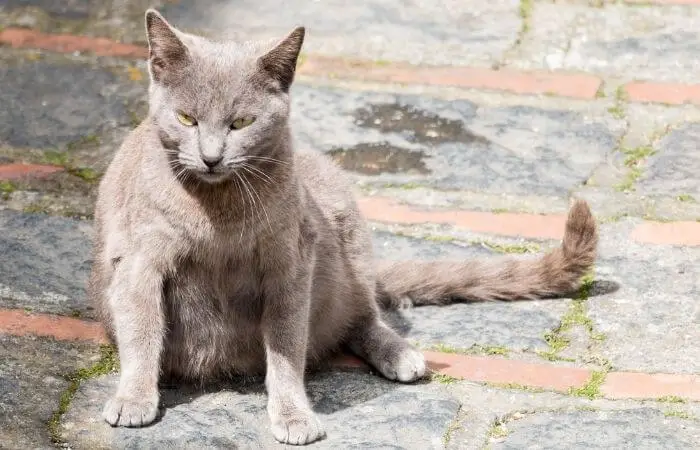
Causing a secondary source of pain can sometimes be calming for some animals as it may decrease the intensity of the primary pain point, which might be more severe.
In other words, your cat might want to distract their own attention by pulling the hair out of that region, so that they feel less pain overall.
This symptom can appear in urinary tract infections, blockages, chronic constipation, or perianal fistulas, for example.
11. Medication Side Effects
As much as veterinary medicine has evolved over the past decade, there are still things that can be improved when it comes to pharmaceutics.
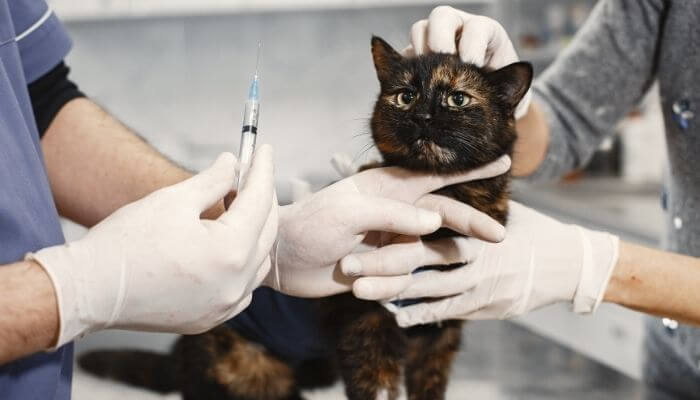
Of course, many are tailored to particular species, but every animal’s body is different and might react uniquely to drugs.
If the therapy that your cat is getting for a condition is causing itchiness or any type of skin discomfort, they might pull their hair out because of that.
12. Fungal Infections
The most common fungal infection that cats can get is ringworm. This is a health issue that can actually be passed from humans to their pets.

While it is treatable, your cat should be diagnosed and receive therapy against it as early as possible.
Your veterinarian can recommend topical medications like shampoos or sprays in this case.





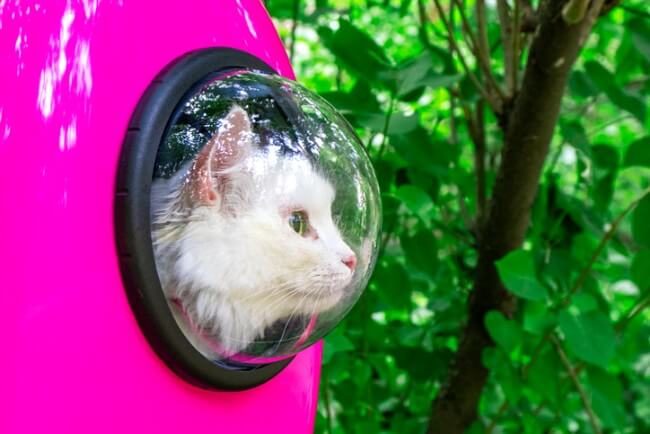

Leave a Comment